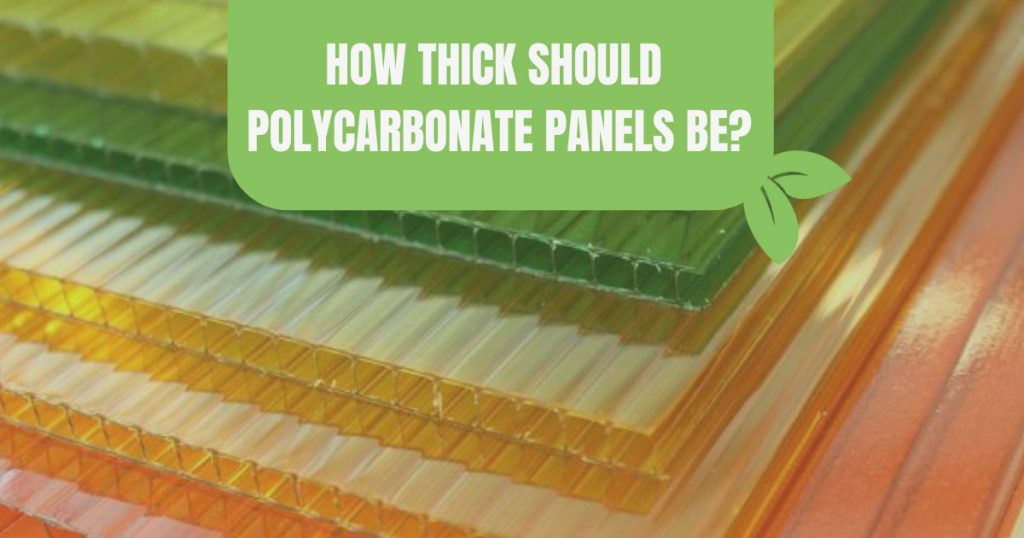
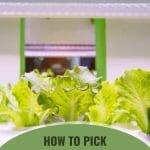

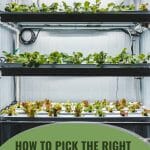
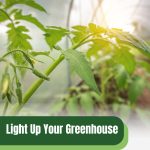
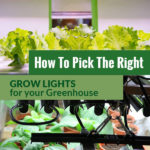
Indoor plants need light to thrive just as much as any other plant. Though greenhouses are designed to let in as much natural sunlight as possible, there may be times when your greenhouse-grown plants are not receiving enough light. For example, maybe the light is being blocked by trees, shelving units, or the foliage of other plants, or maybe the days are simply getting too short to provide your plants with sufficient natural light.
If you’re struggling with inadequate lighting in your greenhouse, you should consider supplementing with grow lights. The right amount of supplemental lighting not only enhances photosynthesis, but it speeds up germination and guarantees healthy blooms!
But with so many options available on the market, it can be a challenge to find the right grow lights for your greenhouse and unique growing needs. Factors such as illumination, cost, and light spectrum all figure into selecting the best greenhouse lights for your needs. Keep reading to learn everything you need to know to pick the right grow lights for your greenhouse, plus our recommendations for you!
Grow lights vs. regular lights
Plants can’t photosynthesize without light, which allows them to convert water, carbon dioxide, and minerals into oxygen and energy needed to grow and develop. While you might be tempted to install regular lights in your greenhouse to supplement natural light and save costs, it’s important to understand that not all light is created equal.
Essentially, the chlorophyll in plants is the most responsive to the red and blue wavelengths of light, or the 400-700 nm range of the visible light spectrum. Green light, roughly in the middle of this spectrum, is not as easily absorbed but penetrates deeper into leaf tissues.

Grow lights are designed to meet the light spectrum needs of plants for all stages of growth, making them the most efficient choice for the greenhouse grower. Regular lights, on the other hand, may not provide the right light wavelength for plants to photosynthesize. Additionally, incandescent light bulbs, besides being highly inefficient, can emit too much heat and burn leaves. And while the blue light of fluorescent bulbs makes them an attractive option, the intensity of light emitted is not enough for flowering or high-light-demanding plants. If you’re hoping to grow fruits and vegetables through the winter, grow lights are a must-have greenhouse accessory.
Different types of greenhouse grow lights
In order to pick the right type of lighting for your greenhouse, you’ll need to understand what you’re looking for. First, there are three different greenhouse lighting systems commonly referred to as grow lights:
T-5 fluorescent lights
T-5 fluorescent lights are full-spectrum light bulbs that are efficient and have a high light output. They use less energy than incandescent lights and can last up to 50,000 hours, making them the workhorses of commercial greenhouses. They are particularly good for starting seedlings and growing leafy greens.
High-Intensity Discharge (HID) lights
HID or High-Intensity Discharge bulbs can provide efficient lighting over large areas. However, they have to be installed at a distance as the heat output can cause leaf burn. There are two kinds of HID bulbs: high-pressure sodium and metal halide.
- High-pressure sodium (HPS) bulbs emit red light that’s best used to encourage flowering and budding.
- Metal halide bulbs emit blue light that stimulates bushy growth.
LED Lights
Light-emitting diodes, or LEDs, are no longer the new kid on the block. In many cases, they’ve superseded other types of grow lights. They offer a balance of performance, energy efficiency, and low cost. What sets LEDs apart is their ability to be tuned to specific light spectrums, catering precisely to the varying needs of plants through different growth stages. LEDs also give off less heat than other lights and are more energy efficient, with an average lifespan of 11 years.
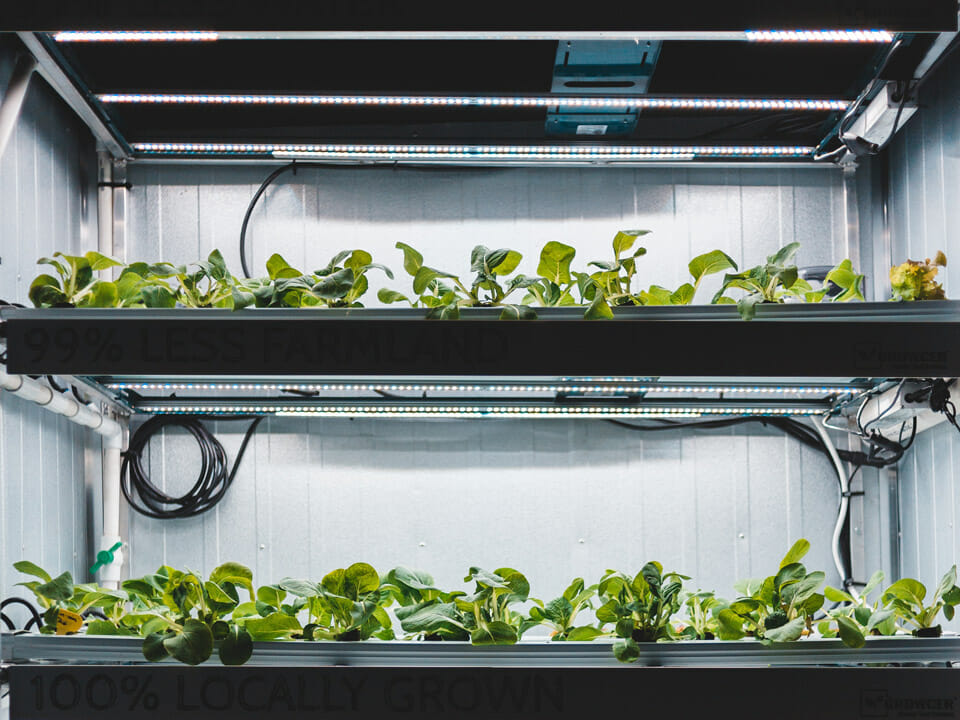
Factors to consider in how to pick the right grow lights for your greenhouse
Besides the type of light bulb, there are a number of other important aspects to consider when selecting a greenhouse light system. Greenhouse grow lights should be long-lasting, energy-efficient, and cover a wide area. Additionally, greenhouse grow lights should have the option to be used alone or daisy-chained together to easily and efficiently cover a wider area.
Are the grow lights waterproof?
It’s important that the grow lights you choose for your greenhouse are waterproof, as you’ll be watering your plants frequently and humidity can remain high in the greenhouse environment. Grow lights that aren’t properly sealed can malfunction when exposed to too much moisture, and that’s the last thing you’ll want to deal with.
Grow lights designed specifically for greenhouse use are usually waterproof or highly water-resistant, but it’s still important to check if a particular product is waterproof or at least able to withstand high moisture levels.
How much area do the grow lights cover?
Another important consideration is how much surface area the grow lights cover. Whether you’re trying to provide light to your entire greenhouse or multiple shelving units, you’ll want to calculate the total surface area so you can get the right number of lights. Watts are a good, albeit imperfect, indicator of how much surface area a grow light will cover: higher wattage generally indicates that a grow light can cover more space at a greater distance from the plant canopy.
However, LED lights operate more efficiently than traditional grow lights, so you can get the same amount of light for fewer watts. Often manufacturers will distinguish between displayed vs. actual wattage for this reason. For instance, a single LED grow light might use 25 actual watts, but give off light equivalent to a 50 W HPS grow light. Both lights will provide enough light for approximately 1 square foot, but the LED light will do so more efficiently.
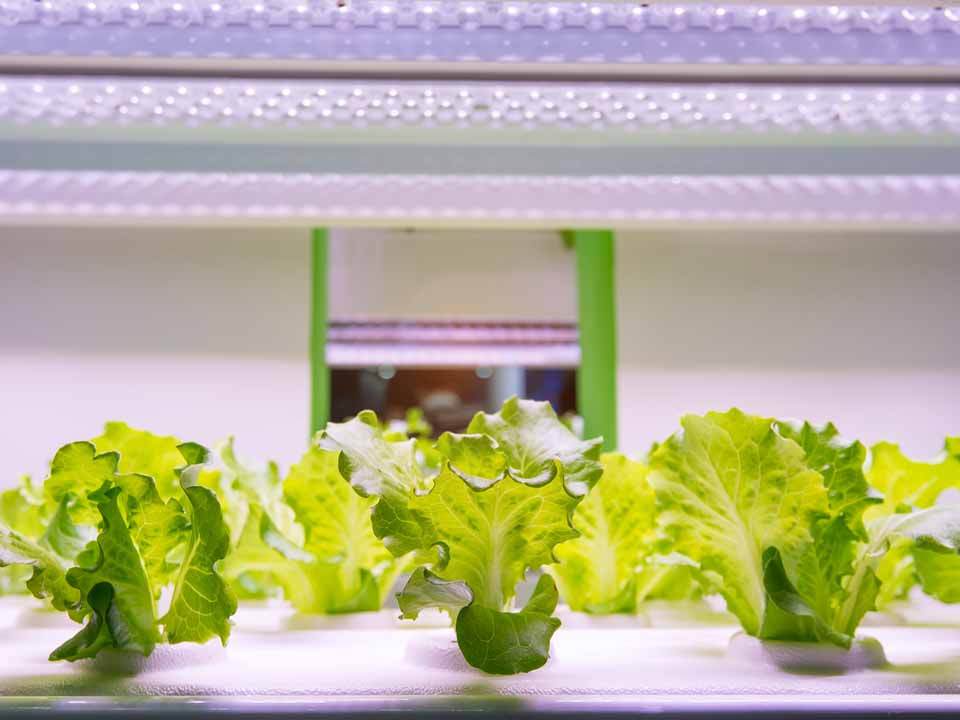
What is the grow light’s range?
Grow lights with higher wattage are generally more powerful and emit more light, but we also know that LED’s are more efficient at lower wattage. That said, you can use the “displayed wattage” of an LED grow light to figure out a grow light’s range, or how far away you can place it from the plant canopy without sacrificing light intensity.
Here’s a general rule of thumb:
- 100 W = 8 -12 inches away
- 200- 399 W = 12- 20 inches away
- 400- 599 W= 20- 30 inches away
- 600+ W = 30+ inches away
For best results, make sure to monitor your plants at various distances. If a plant appears to be leggy or stretching towards the light, move the grow light closer. If you observe leaf burn or bleaching, move the grow light farther away.

Low-light vs. full-sun plants?
If things weren’t complicated enough, you’ll also need to consider the needs of individual plants when choosing and placing your greenhouse grow lights.
Low-light plants such as tropical houseplants or leafy greens don’t need as much direct light to thrive. You can either place grow lights farther from the plant canopy and/or reduce the amount of time a grow light is on during the day.
Sun-loving plants such as tomatoes, on the other hand, might need as much as 12-16 hours of bright light close to the canopy.
Group plants with similar light requirements together so you can adjust your grow lights accordingly. For example, raise grow lights farther away from the plant canopy for low-light plants, or closer for plants requiring full-sun conditions.
You can even set grow lights on a particular schedule using a timer such as this one.
Are different grow lights necessary for different plant stages?
Plants benefit from different light ratios at various points in their life cycle. For instance, seedlings perform best with more blue light, while plants need more red light when developing blooms and fruit.
Many greenhouse grow lights offer a balanced light spectrum that can meet the needs of all plant stages. That said, some grow lights can toggle between different modes (for example, red light vs. blue light) to enhance leafing or blooming as needed.
For most hobby greenhouse growers, it’s not necessary to buy and install different grow lights. If you want to switch between different light colors, simply choose a single grow light with those modes. For most purposes, however, a full-spectrum grow light supports healthy plant growth at all stages.
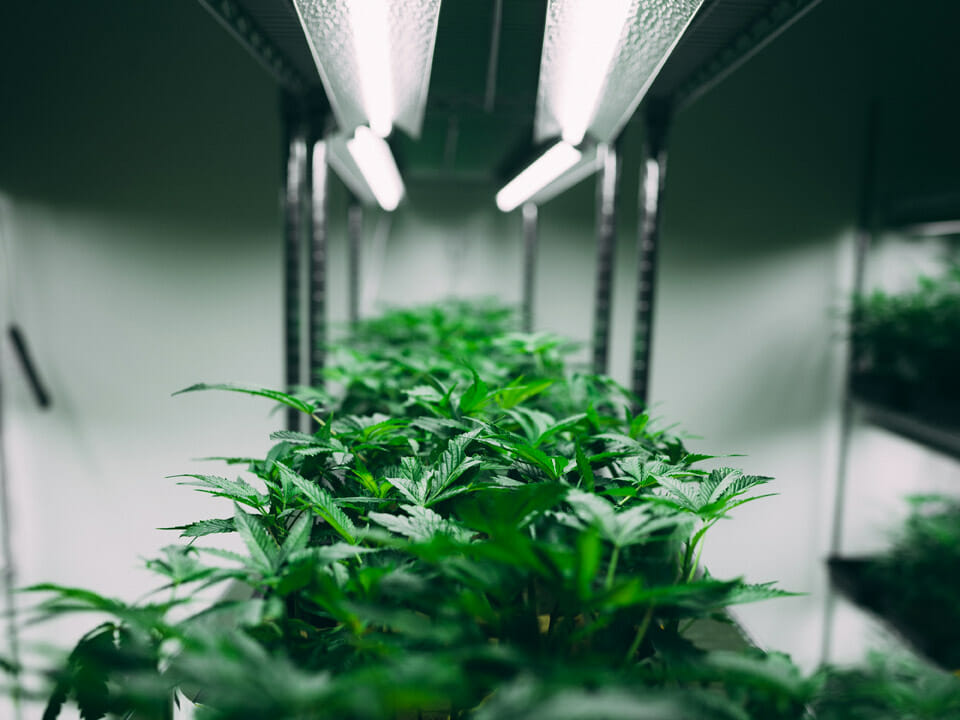
The best greenhouse grow lights
To help you pick the right grow light for your greenhouse, we’ve narrowed down our top choices in the following categories: germination, flowering, vegetation, and budget.
Best choice for seedlings: MARS HYDRO TS-1000 Led Grow Light
This square, 3ft x 3ft LED grow light is perfect for starting seeds. It boasts full spectrum light with high efficacy in the blue and red ranges, with blue light being more important for germination and early leaf development. The 120° refraction angle ensures wide coverage, but you can cover even more area by daisy-chaining multiple lights together.
Product features:
- 150 W
- PPFD: 343 umol/m2s@12
- Full light spectrum (730-740nm Red IR/3200-4200Knm/5200-6800Knm)
- Light-weight at 3.7 lbs
- Max coverage is 3ft x 3ft
- 120° refraction angle ensures good coverage
- You can daisy chain up to 60 lights together, great for a medium-sized greenhouse
- There is an adjustable 0-100% dimming feature
- Ideal height from canopy for germination: 12”
- 5-year product warranty
Best choice for healthy blooms: Illumitex Eclipse GEN2 LED Grow Light
Get your plants to produce large, healthy blooms with the Illumitex Eclipse GEN2 LED grow light 4ft bar. The slim design allows for easy connection of multiple lights (up to 15 lights on a single power source), providing bright, uniform F3 spectrum light. The primarily red and blue wavelength is ideal for all stages of plant growth, especially once a plant starts flowering.
- Full F3 light spectrum
- Light-weight at 6 lbs
- Coverage: around 3.5 sq. ft. at 12”; 11 sq. ft. at a 26”
- Special design with 50° beam angle ensures maximum light distribution
- Can be chained together with up to 15 lights using the included 9-foot long power cord
- Internal dimmable driver (0-10V)
- Dust-resistant, waterproof, and damp-proof
- 5-year product warranty

Best choice for vegetables: AntLux 4FT LED Grow Lights
If you’re looking for an affordable, effective grow light to overwinter vegetables such as leafy greens, the AntLux LED grow light is a good option for you. This grow light comes in a pack of 4 and you can daisy chain up to 10 together on a single power source to light up an entire small greenhouse.
- 50W
- Mainly blue and red light spectrum
- Each light weighs about 3.4 lbs
- Coverage: about 16 sq. ft. at 8”; 27 sq. ft. at 12”; 41 sq. ft. at 16”
- Integrated light reflectors reduce light loss and provide excellent heat dissipation; ideal for all kinds of flowers
- Daisy chain up to 10 together with a single power source
- Comes with mounting/hanging hardware
- 5-year product warranty
Best choice on a budget: Monios-L T5 Grow Lights
If this is your first time buying grow lights for your greenhouse, and you don’t want to invest too much, the Monios-L T5 LED grow lights are affordable and highly effective. These come in a pack of 6 and can be daisy-chained together. If you want to set up more than this, you’ll need multiple power sources.
As you would expect from a budget grow light, these boast no fancy features such as dimming, but the full spectrum light will still support healthy plant growth at all stages.
- 20W
- Full light spectrum (380nm to 780nm), available in pink, white, or yellow (soft white)
- Available in 4ft and 2ft lengths
- Mounting hardware included (3 choices: zip ties, screw, double sided tape)
- Space 6-40” from plant canopy, with closer providing more bright light to the plants
- 2-year product warranty




















